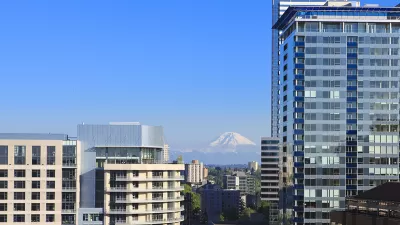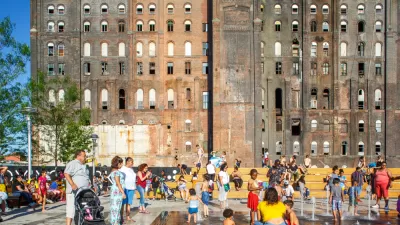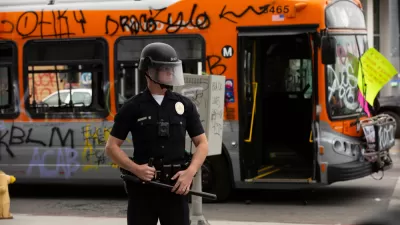For Michael A. Pagano, local municipalities went awry in designing fiscal systems during the 20th century by fabricating what he refers to as “a crazy quilt of local revenue.” He proposes some possibilities for getting cities back on track.
From Boston to Cincinnati to Tulsa, cities depend to largely varying degrees on property taxes, income taxes, and sales taxes as a source of revenue. Historically, however, Pagano points out, “[i]t wasn't always like this." Municipal governments used to rely more heavily on property taxes and on taxing the rich. Since the turn of the 20th century, states went from raising 45 percent of their own-source revenue from the property tax, to only 3 percent in the post-World War II era, despite such taxes remaining "a dominant revenue source for decades to come."
No matter what the tax source, however, the past five years have had a huge impact on municipal revenues. “The Great Recession is just the latest challenge to cities’ ability to raise tax revenues from various sources,” writes Pagano. “Increased unemployment, declining consumer confidence and other economic trends associated with the Great Recession have had a substantial impact on all sources of tax revenue for the nation’s cities.” Yet as cities seek out new ways of raising revenues in the form of user fees, while also looking to cut spending, Pagano asks, “Is the current fiscal architecture of a city a good one?” One major problem he points to is the “free rider” economic structure of many regions in which employment centers fail to capture tax revenues from commuters despite the provision of city services “during their 9-to-5 lives.”
So, what is the solution? Pagano proposes taxation “at the place of employment” as a means of better “[linking] cities to their underlying engines of growth or to income and wealth, similar in design to what the property tax attempted to accomplish two centuries ago.” He pushes the reader to “imagine” how this could change the “decision calculus” by which individuals, households and users of city-government services choose where to work and live, while “paying their fare share.” Pagano concludes, “It could be revolutionary.”
FULL STORY: How Our Current Tax System Is Failing Cities

Study: Maui’s Plan to Convert Vacation Rentals to Long-Term Housing Could Cause Nearly $1 Billion Economic Loss
The plan would reduce visitor accommodation by 25,% resulting in 1,900 jobs lost.

North Texas Transit Leaders Tout Benefits of TOD for Growing Region
At a summit focused on transit-oriented development, policymakers discussed how North Texas’ expanded light rail system can serve as a tool for economic growth.

Using Old Oil and Gas Wells for Green Energy Storage
Penn State researchers have found that repurposing abandoned oil and gas wells for geothermal-assisted compressed-air energy storage can boost efficiency, reduce environmental risks, and support clean energy and job transitions.

San Mateo Formally Opposes Freeway Project
The city council will send a letter to Caltrans urging the agency to reconsider a plan to expand the 101 through the city of San Mateo.

A Bronx Community Fights to Have its Voice Heard
After organizing and giving input for decades, the community around the Kingsbridge Armory might actually see it redeveloped — and they want to continue to have a say in how it goes.

Houston Mayor Promises Dedicated Austin Street Bike Lane After Public Backlash
Although the one-way bike lane won’t be protected by physical barriers, the proposal is an improvement over the mayor’s initial plan to only include sharrows on the Austin Street project.
Urban Design for Planners 1: Software Tools
This six-course series explores essential urban design concepts using open source software and equips planners with the tools they need to participate fully in the urban design process.
Planning for Universal Design
Learn the tools for implementing Universal Design in planning regulations.
Borough of Carlisle
Caltrans
Heyer Gruel & Associates PA
Institute for Housing and Urban Development Studies (IHS)
City of Grandview
Harvard GSD Executive Education
Toledo-Lucas County Plan Commissions
Salt Lake City
NYU Wagner Graduate School of Public Service





























